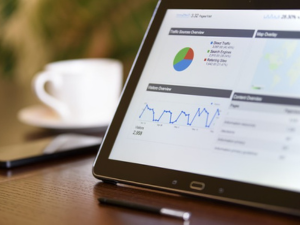Collecting Data From Within Your Business Is Easy
In this day and age, collecting information has become super easy. Thanks to tech advances, businesses gather information from almost anything. The challenge is making sense of all the data.
How Data Analytics Helps You
Data analytics is like your business’s magnifying glass. Instead of guessing, you can make choices based on real facts. Here’s what data analytics can do for you:
- Make customers happier
- Make work processes smoother
- Keep up with market changes
- Help your business grow faster
Different Kinds of Data You Might See
It’s good to know where your data comes from. Here’s a simple breakdown:
- Proprietary Data: This is the information that your business produces from its day-to-day operations. Think of sales receipts, customer details from sign-ups, or feedback forms from your website. It’s data that only you have because it comes directly from your business activities.
- Public Data: This data is available to everyone. Examples include census results, public surveys, or industry reports published for anyone to see. They can provide insights into general market conditions, population demographics, or industry benchmarks.
- Partner Data: You might share information when collaborating with other businesses or stakeholders. This could be joint customer surveys, shared market analysis, or combined sales data from a collaborative event. This data is typically shared between partners for mutual benefit.
Starting With Data Analytics: Tips to Dive In
Before you start with data analytics, here are some steps to guide you:
- Have a Goal. Be clear about what you want from data analytics. You may want to know what customers think, or you might want to streamline work processes.
- Pick Important Data. Gather the data that helps you reach your goal.
- Select Helpful Tools. There are many data tools out there. Choose the one that fits your data size and what you want to know.
- Start With a Quick Look. A quick check can show you some fundamental trends in your data.
- Go Further with More Checks. After the first look, try deeper checks to get more insights.
- Track Simple Metrics. These are your data’s signposts. They show if your new, data-backed choices are working.
Make Data Part of Your Daily Work
To get the best from data analytics, everyone in your team should think “data-first.” It means data should back all decisions. This way, everyone is on the same page and makes choices that help the business.
A Call to Action
Data analytics is more than just numbers and charts; it’s about understanding your business better. When you use data correctly, you make more intelligent and more informed decisions. It’s like having a roadmap for your business, showing where you’re strong and where there’s room to grow. Keep using data, stay informed, and watch your business benefit.
Additional Information
Investopedia: What Is Data Analytics?
University of Pennsylvania: 5 key reasons why data analytics is important to business
Please sign up for our newsletter above
By Denis Wilson

Thanks for reading this post. I always take into mind that your time and attention are precious. And these posts need to be timely, to the point, and short. For more tips on thriving with small business technology, check out the other blog posts at DWPIA Blogs. You can also find me on LinkedIn, YouTube, and Facebook.
I am also a published author and speaker on cloud computing, work-from-anywhere, and cybersecurity. I work extensively with business and professional associations to provide small business technology education programs.
Contact me if you have any questions about the subject. I'd be happy to spend 15 minutes discussing it with you.



